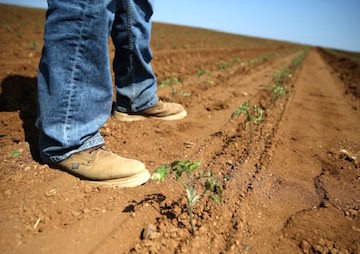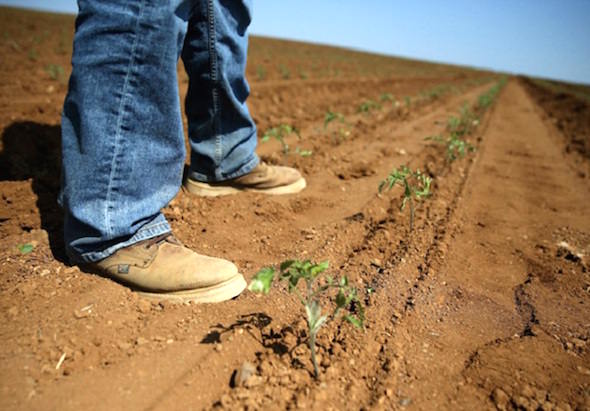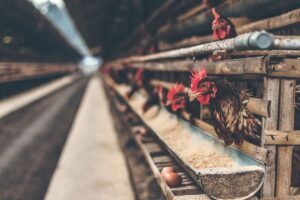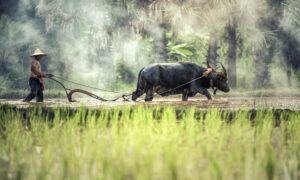Stress on Water Resources Threatens Lives and Livelihoods
Satellite data raise red flags about the draining of underground aquifers in California and elsewhere to meet the demands of expanding populations.
By Tim Radford, Climate News Network

Depletion of aquifers adds to pressures on farmers in drought-stricken areas such as California. (General Physics Laboratory via Flickr)
This Creative Commons-licensed piece first appeared at Climate News Network.
LONDON — The planet’s great subterranean stores of water are running out — and nobody can be sure how much remains to supply billions of people in the future.
Satellite instruments used to measure the flow from 37 underground aquifers between 2003 and 2013 have revealed that at least one-third of them were seriously stressed — with little or almost no natural replenishment.
The research was conducted by scientists from California and the US space agency NASA, who report in the journal Water Resources Research that they used data from NASA’s Gravity Recovery and Climate Experiment (GRACE) satellites to calculate what is happening to aquifers.
The two satellites measure variations in the gravitational pull of the planet’s surface, and have already revealed changes in the mass of ice sheets on the planetary surface. But buried water, too, has mass, and changes in the mass of bedrock in known aquifer regions would therefore offer a guide to depletion.
Driest regions
Not surprisingly, the researchers found that those regions that are already driest were drawing most heavily on the groundwater below the surface.
The Arabian aquifer system — the principal water source for 60 million people — is the worst stressed, followed by the Indus Basin of north-west India and Pakistan, and then the Murzuk-Djado basin in northern Africa.
The scientists warn that climate change — a consequence of increasing atmospheric carbon dioxide emissions from the human combustion of fossil fuels — and population growth will make things worse.
“What happens when a highly-stressed aquifer is located in a region with socioeconomic or political tensions that can’t supplement declining water supplies fast enough?” asks Alexandra Richey, who conducted the research as a University of California Irvine doctoral student. “We’re trying to raise red flags now to pinpoint where active management today could protect future lives and livelihoods.”
“We can no longer tolerate this level of uncertainty, especially since groundwater
is disappearing so rapidly.”
Her colleague, hydrologist James Famiglietti, identified his own home state of California as a cause for concern because it is in the grip of an extended drought that threatens agriculture.
“As we’re seeing in California right now, we rely much more heavily on groundwater during drought,” he says. “When examining the sustainability of a region’s water resources, we absolutely must account for that dependence.”
Groundwater accumulates slowly in the underlying bedrock over millennia. There is no problem if it is withdrawn slowly, but human population has exploded threefold in one human lifetime, and water use has risen even faster.
Supply problem
Research like this is a demonstration of ways to address a supply problem — but there is more work to be done.
In a second study in Water Resources Research, the same team examined the challenge of trying to calculate the rates at which aquifers are being emptied, and the uncertainties as to how much might remain in them.
In the Northwest Sahara, for instance, estimates of the projected “time to depletion” varied from 10 years to 21,000 years. “In a water-scarce society,” Richey says, “we can no longer tolerate this level of uncertainty, especially since groundwater is disappearing so rapidly.”
Professor Famiglietti concludes: “I believe we need to explore the world’s aquifers as if they had the same value as oil reserves. We need to drill for water in the same way that we drill for other resources.”
Your support matters…Independent journalism is under threat and overshadowed by heavily funded mainstream media.
You can help level the playing field. Become a member.
Your tax-deductible contribution keeps us digging beneath the headlines to give you thought-provoking, investigative reporting and analysis that unearths what's really happening- without compromise.
Give today to support our courageous, independent journalists.








You need to be a supporter to comment.
There are currently no responses to this article.
Be the first to respond.